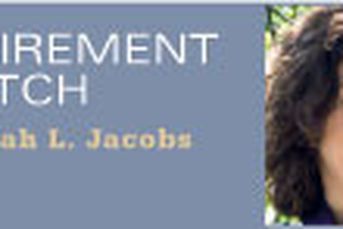The estate tax crisis must be confronted

The failure of Congress to plug the 2010 estate tax loophole has created considerable uncertainty.
The failure of Congress to plug the 2010 estate tax loophole has created considerable uncertainty. But even without being able to provide definitive answers, financial advisers can strengthen their relationships with clients by explaining risks and offering short-term crisis management.
Until Congress takes action, here is a capsule of where we stand now:
After being discontinued at the end of last year, both the estate tax and the generation-skipping transfer tax are scheduled to return in 2011 under a decade-old formula that exempts the first $1 million of an estate from taxation and taxes the rest at 55%.
Gift taxes remain for those who give away more than $1 million during their life, but the top tax rate stands at 35%, not the former 45%.
Heirs must now use the basis, or the original price paid for an asset, when computing the value of inherited assets, instead of the step-up, or what those assets are worth on the date of death. This means that when they sell their inherited assets, heirs will pay a capital gains tax on the appreciation.
Each estate can exempt $1.3 million of gains from this carryover basis rule. Another $3 million exemption applies to assets inherited from a spouse.
Most estate planners expect Congress to restore the taxes retroactively to Jan. 1, and put back in place the system that applied in 2009: a $3.5 million exemption for estate tax and generation-skipping transfer tax, with a 45% rate for these two taxes and the gift tax.
But until the dust settles, advisers can use the uncertainty as a marketing opportunity to provide damage control, particularly for clients involved with estates of those who might die in 2010. There are two major ways to help.
First, help clients organize their records to show the cost basis of assets they might ultimately inherit.
Many people who never needed to be concerned about estate taxes will be affected by the carryover basis rule. Advisers can call this to clients’ attention and, to the extent that they have the necessary support staff, offer assistance, especially with hard-to-track records of stock transactions, which can include splits.
Second, encourage clients to look over their wills and living trusts to check for phrases such as “that portion,” “that fraction” or “that amount.”
These are signs that an attorney tried to take maximum advantage of the estate tax exemption, which kept increasing. In 1999, it was $650,000; by 2009, it had reached $3.5 million.
Formula clauses were often used in connection with bypass (or family) trusts, which are designed to preserve the estate tax exemption for both spouses.
Here is how these trusts work:
Assume your client’s will includes a formula clause that would allocate up to the maximum tax-free amount to the trust if the client died before his or her spouse. The trust distributes assets as specified in the trust document — say, to the spouse and family members while the spouse is alive — and then pays what is left to the family upon the spouse’s death.
Putting the funds in a trust, rather than leaving them to the client’s spouse outright, ensures that neither the assets nor any appreciation will be considered part of the spouse’s estate — and therefore isn’t subject to tax when the spouse dies. If the rest of the assets go to the spouse, the tax on that portion, called the marital share, isn’t eliminated, but rather postponed until that person’s death.
In most cases, no tax will be assessed when the client dies, because assets inherited from a spouse are entitled to an unlimited marital deduction. Any money that remains of the marital share will be taxed when the spouse dies.
But what happens if there is no estate tax? Depending on how a formula clause is worded, it is possible that everything will go into a bypass trust. And that could lead to some awful scenarios.
One possibility, if the trust isn’t set up to make payments to the spouse (for example, if it benefits only children from a previous marriage), is that the spouse gets nothing. Another possibility is that even if the trust does benefit the spouse, all the money will be locked up in the trust, and the spouse won’t receive anything outright.
If a client’s estate plan suffers from this defect, the lawyer who initially wrote the document may be able to fix the problem with a simple amendment. Assuming these are the only changes the client is making, the legal fee should be minimal.
By helping clients navigate potential pitfalls while the tax system is in flux, you reinforce your role as a trusted adviser.
Deborah L. Jacobs is a lawyer and author of “Estate Planning Smarts: A Practical, User-Friendly, Action-Oriented Guide” (DJWorking Unlimited, 2009).
For archived columns, go to InvestmentNews.com/retirementwatch.
Learn more about reprints and licensing for this article.




